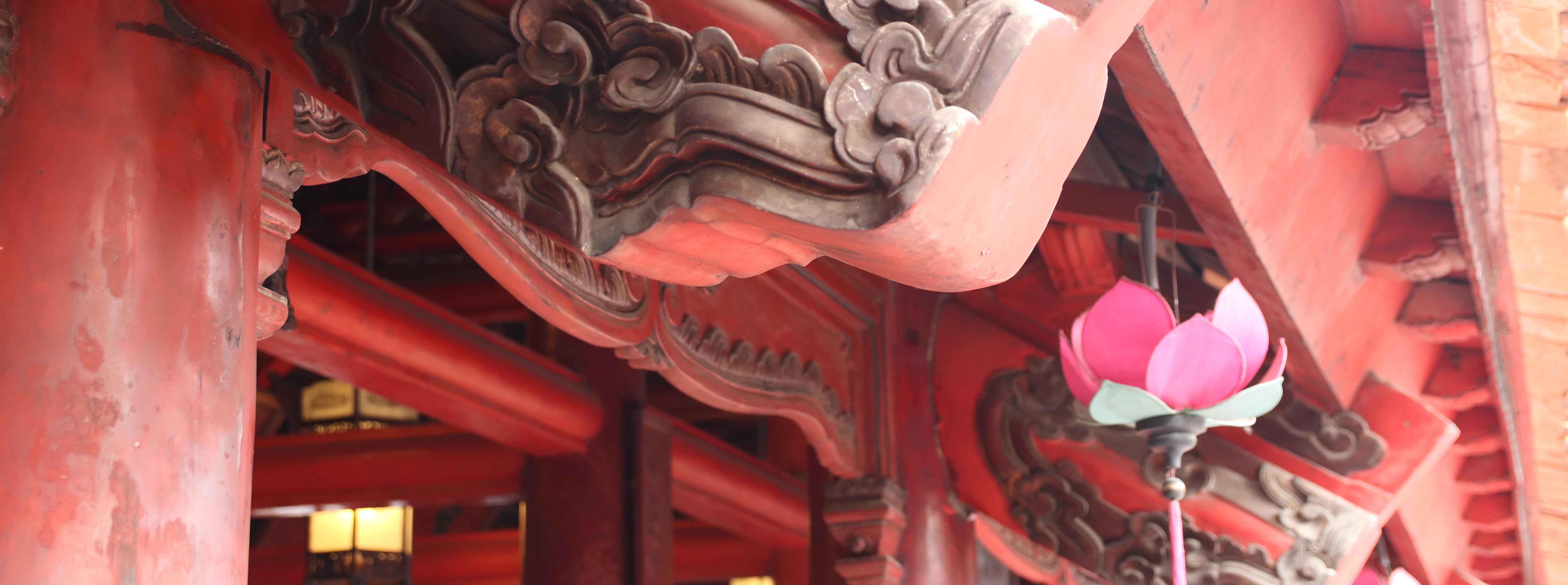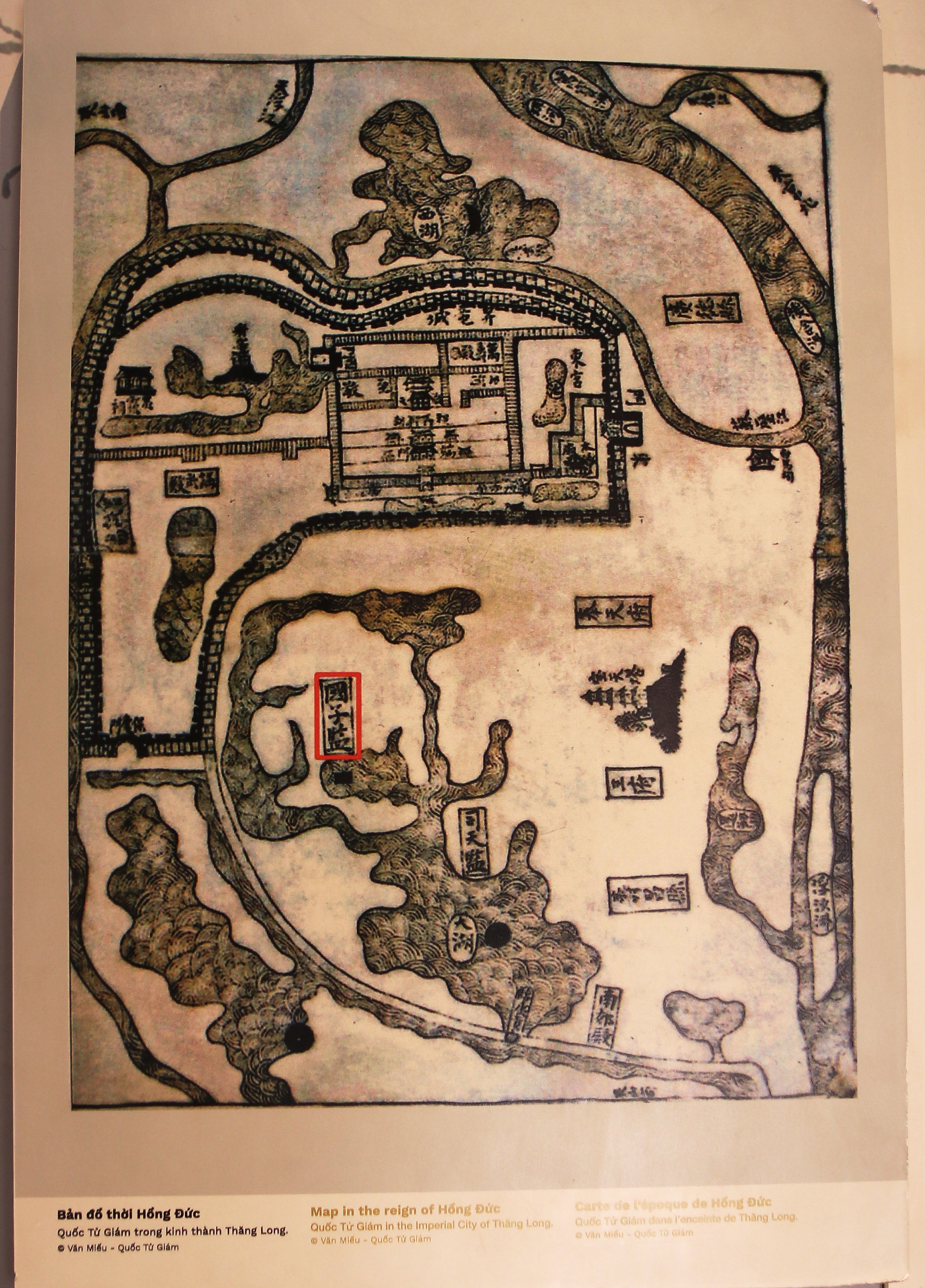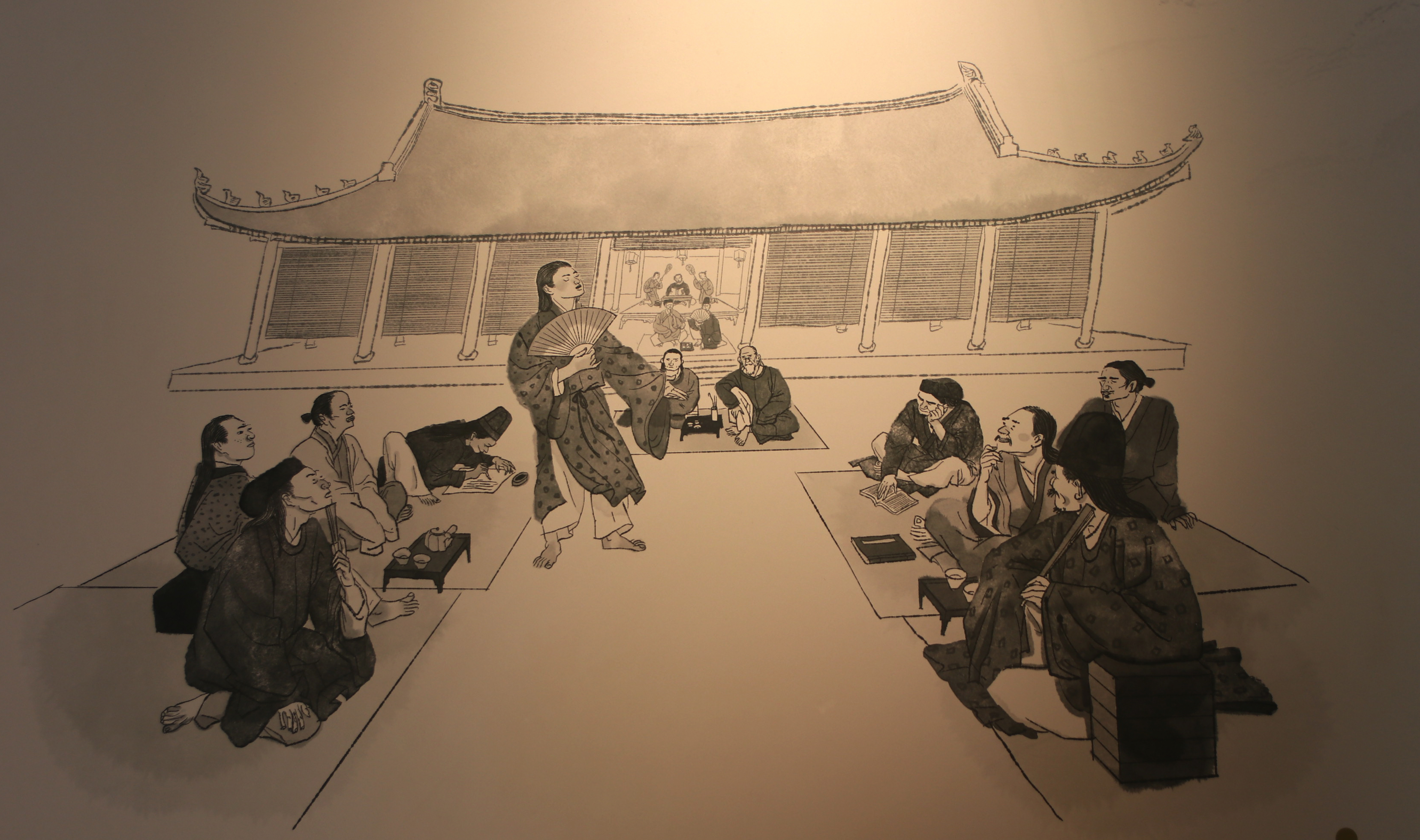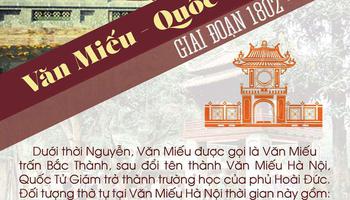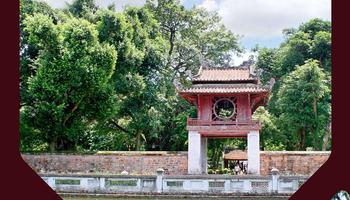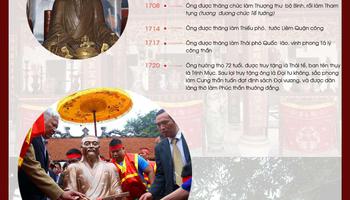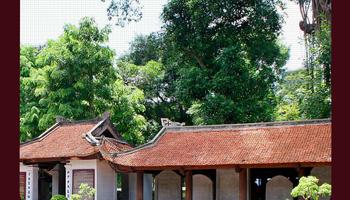QUỐC TỬ GIÁM DURING THE LÊ DYNASTY THROUGH DISPLAYED ARTIFACTS
The exhibition space "Quốc Tử Giám – The First National University" at the Đông Vu building, Đại Thành area, showcases more than 200 documents and artifacts to introduce visitors to the history of Quốc Tử Giám and the imperial examinations for selecting and training talented individuals during the monarchy.
In the section presenting Quốc Tử Giám during the Lê Dynasty, information, images, and artifacts recreate the teaching and learning processes, the roles of scholars, students, and the school regulations at Quốc Tử Giám from 1428 to 1789.
Reconstructed versions of woodblocks from the "Khâm định Việt sử thông giám cương mục" record events such as in 1483 when King Lê Thánh Tông expanded Quốc Tử Giám, which was then called the Thái Học House, and in 1511, when King Lê Tương Dực ordered Nguyễn Văn Lang to renovate the Sùng Nho Hall at Quốc Tử Giám, including two side halls, the Minh Luân House, the kitchen, storage room, and to refurbish the two Doctoral Steles.
A painting vividly depicting a literary debate at Quốc Tử Giám has been recreated. Such debates were organized with great solemnity, following the court’s prescribed rituals.
Replicas of clothing and items used by Confucian scholars help visitors visualize the attire of students in the past. Confucian scholars wore low-crowned hats, blue cotton robes with linings, without back flaps, and single-string tassels. Study tools included brushes, scroll tubes, ink stones, and Dó paper.
One of the artifacts is the "Analects" book, used by Quốc Tử Giám students. Study materials at Quốc Tử Giám included the "Four Books" and the "Analects." Initially, teaching and learning materials were provided by the court in 1467 when the state printed the "Five Classics" for Quốc Tử Giám. Later, Quốc Tử Giám organized the carving and printing of books to supply Confucian scholars both inside and outside the academy. The woodblocks from Quốc Tử Giám bear the inscription "Quốc Tử Giám stored edition."
The painting "Vinh quy bái tổ" (Returning native village to pay respect to his ancestors, parents and teacher) along with a modular setup featuring the Doctoral Steles and an interactive screen, provides visitors with information about education during the Lê Dynasty. Under the Lê Dynasty, for the first time, those who passed the examinations were granted numerous privileges such as parade traditions and the honor of "returning in glory to pay homage," with their names and hometowns engraved on stone steles at the Văn Miếu to be remembered and to encourage future generations to study.
The exhibition space of Quốc Tử Giám during the Lê Dynast
Hồng Đức map
Reconstructed versions of woodblocks from the "Khâm định Việt sử thông giám cương mục"
A painting vividly depicting a literary debate at Quốc Tử Giám

Replicas of clothing and items used by Confucian scholars


he painting "Vinh quy bái tổ" (Returning native village to pay respect to his ancestors, parents and teacher)

Khách tham quan trưng bày
LH
